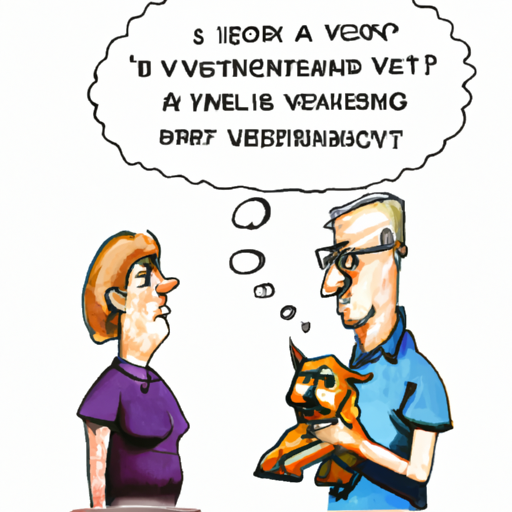Understanding Your Dog’s Eyes
Your dog’s eyes are a window to their heart and soul, and they are also a critical indicator of their health. If you’ve noticed that your dog’s pupils are different sizes, it’s time to pay attention. This condition, known as anisocoria, can be a sign of a variety of health issues.
What Causes Anisocoria in Dogs
Anisocoria can be caused by several factors. Here are the most common ones:
- Trauma to the eye or head
- Infections or inflammation
- Glaucoma
- Tumors
- Neurological disorders
Let’s delve a little deeper into each of these causes:
- Trauma: Accidents can cause damage to the eye structures or the nerves that control pupil size.
- Infections or inflammation: These can cause swelling and changes in the eye, leading to anisocoria.
- Glaucoma: This eye disease causes increased pressure in the eye, which can affect pupil size.
- Tumors: Tumors in the eye or brain can pressure the nerves and affect pupil size.
- Neurological disorders: Conditions like stroke or seizures can affect the nerves that control the pupils.
Symptoms to Look Out For
It’s not just about the pupil size. There are other signs and symptoms that could indicate a serious health problem. These include:
- Changes in the color of the iris
- Cloudiness in the eye
- Eye discharge
- Squinting or blinking excessively
- Redness and inflammation
- Changes in vision, such as bumping into objects
If you notice any of these symptoms in addition to different pupil sizes, it’s crucial to seek veterinary help immediately.
Treatment Options for Anisocoria
The course of treatment for anisocoria depends on the underlying cause. Here’s a table that outlines some common treatments:
| Cause | Treatment |
|---|---|
| Trauma | Surgery, medication |
| Infection | Antibiotics, anti-inflammatory drugs |
| Glaucoma | Eye drops, surgery |
| Tumors | Surgery, radiation therapy |
| Neurological disorders | Medication, supportive care |
Remember, only a professional veterinarian can diagnose and prescribe the correct treatment.
How to Prevent Anisocoria
While some causes of anisocoria are unavoidable, there are a few steps you can take to protect your dog’s eyes:
- Regular vet check-ups: Routine eye exams can help detect issues early.
- Eye protection: If your dog is adventurous, consider eye protection to prevent injuries.
- Healthy diet: A balanced diet can boost your dog’s overall health, including eye health.
FAQ
Q: Is anisocoria in dogs an emergency?
A: It can be. If the anisocoria is accompanied by other symptoms like redness, pain, or changes in vision, seek immediate veterinary help.
Q: Can anisocoria in dogs be cured?
A: The ability to cure anisocoria depends on the underlying cause. Some conditions can be completely cured, while others can only be managed.
Q: How common is anisocoria in dogs?
A: Anisocoria is fairly common in dogs. However, it’s not a condition to be taken lightly and requires veterinary attention.



